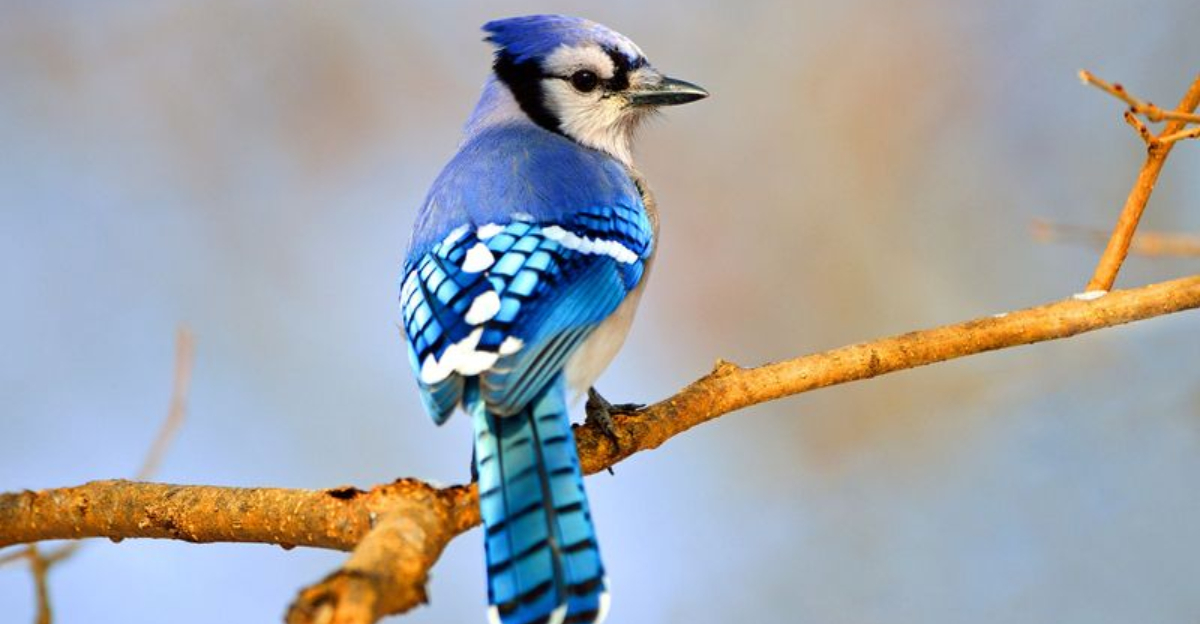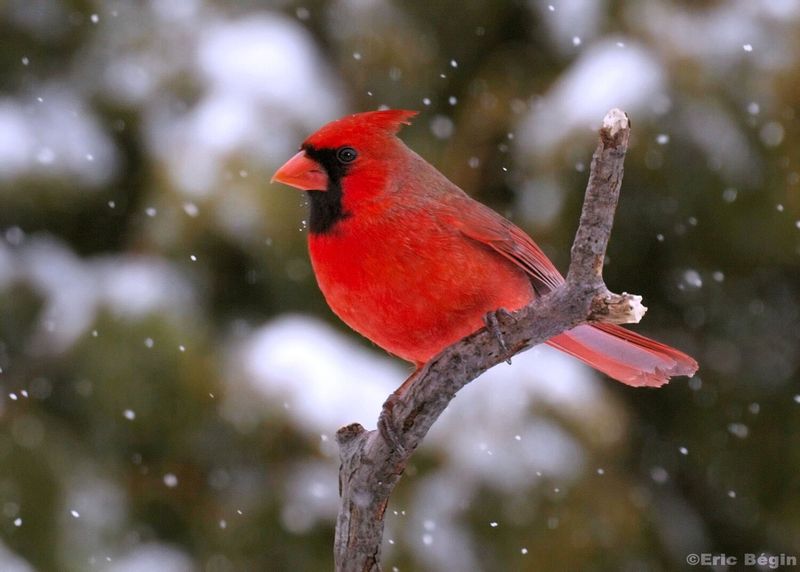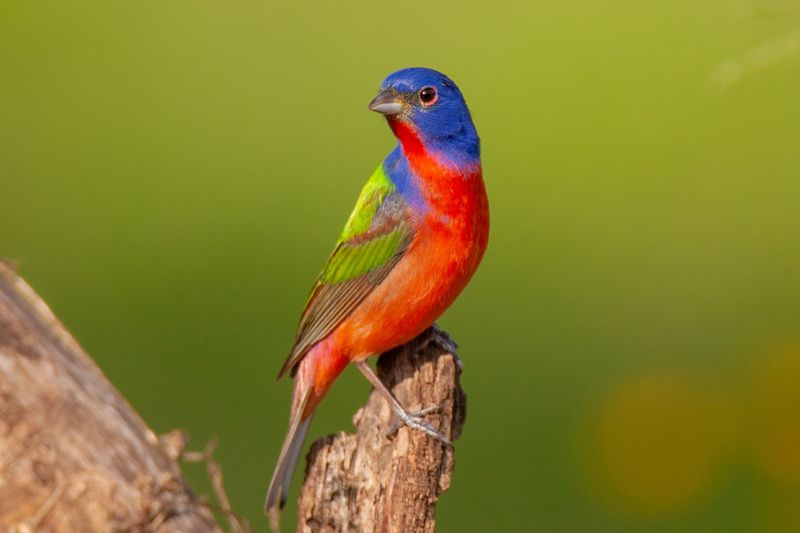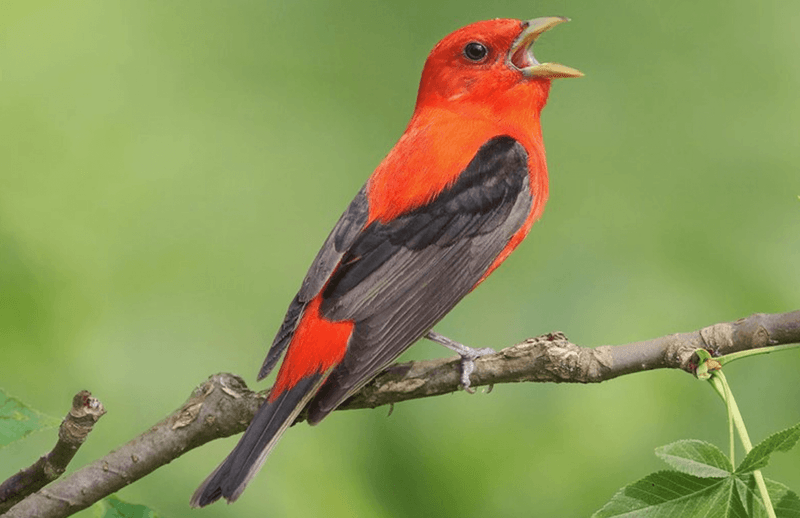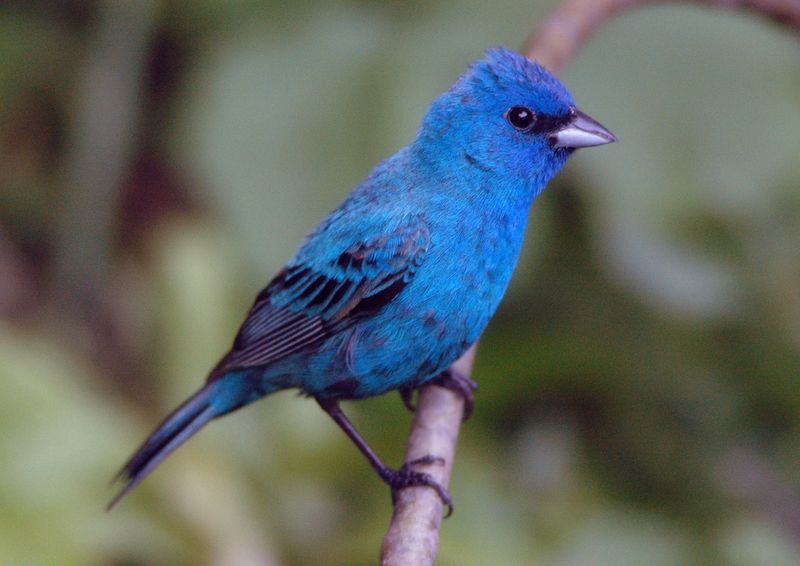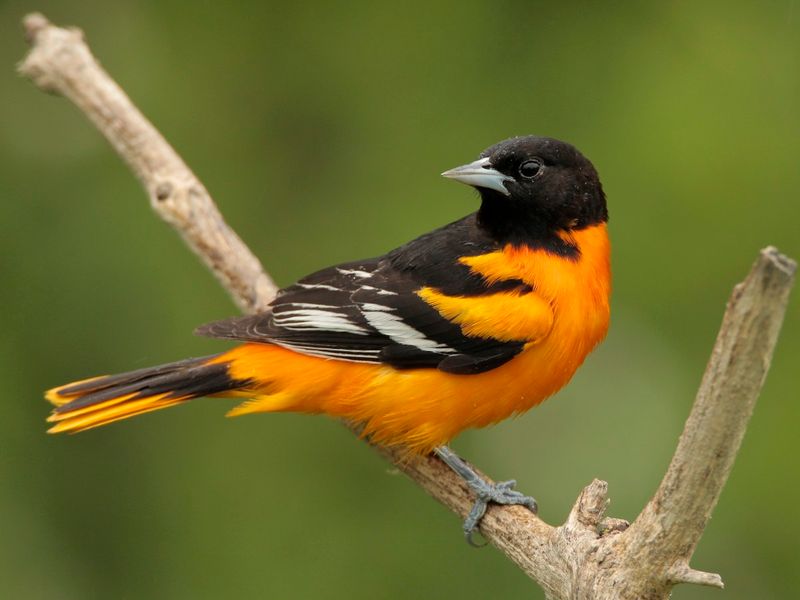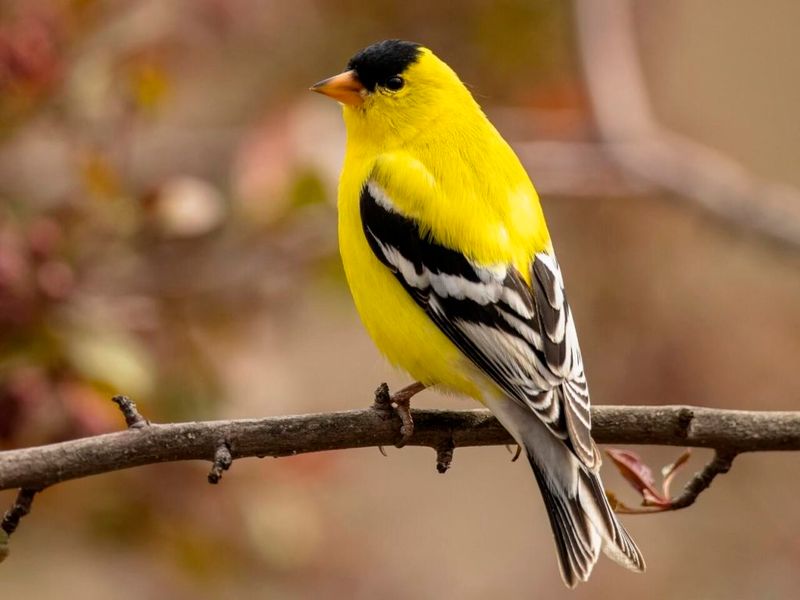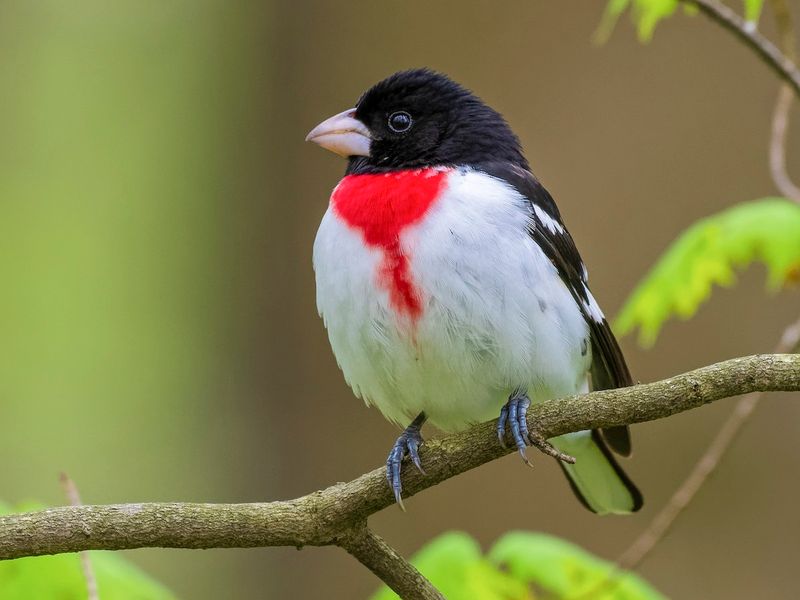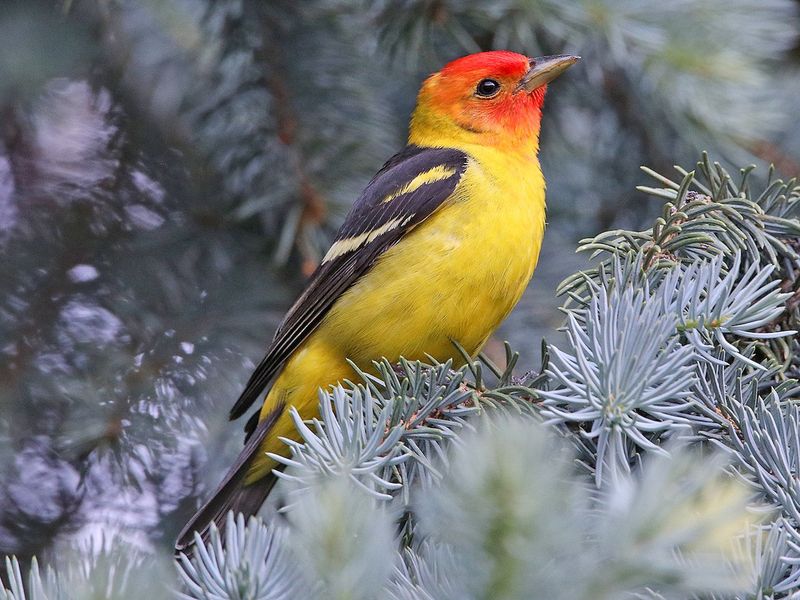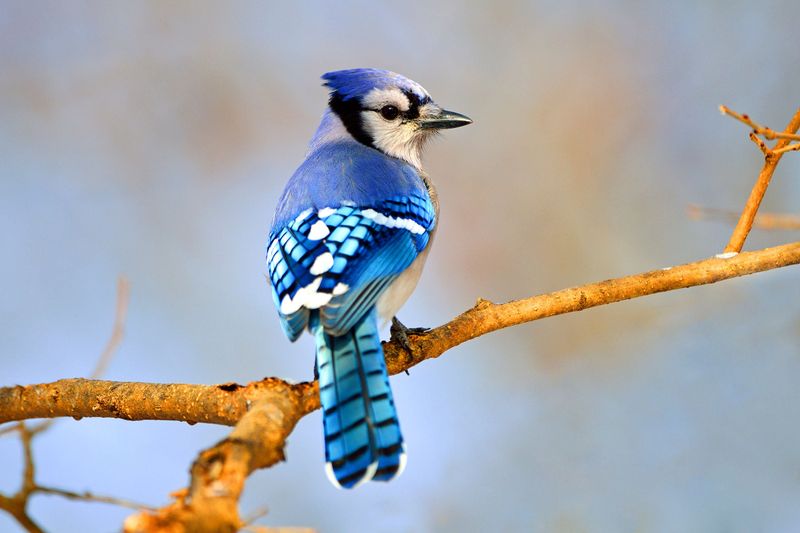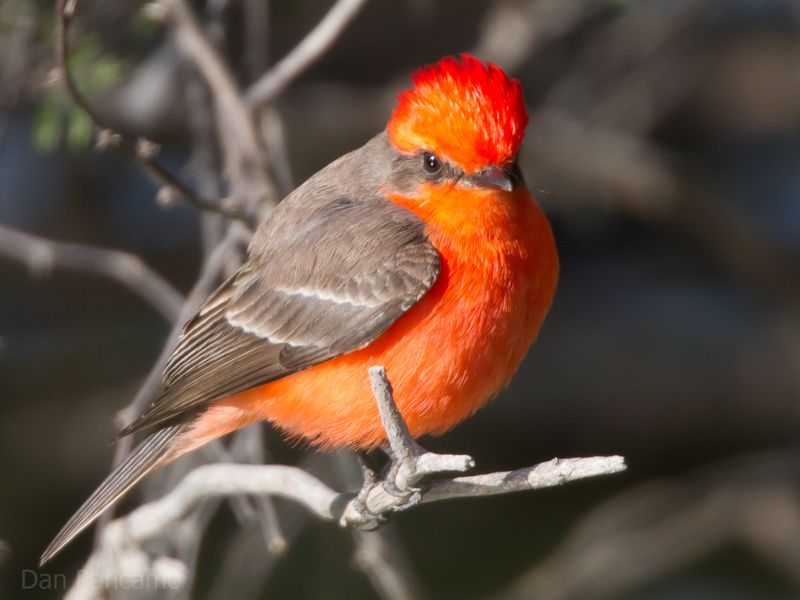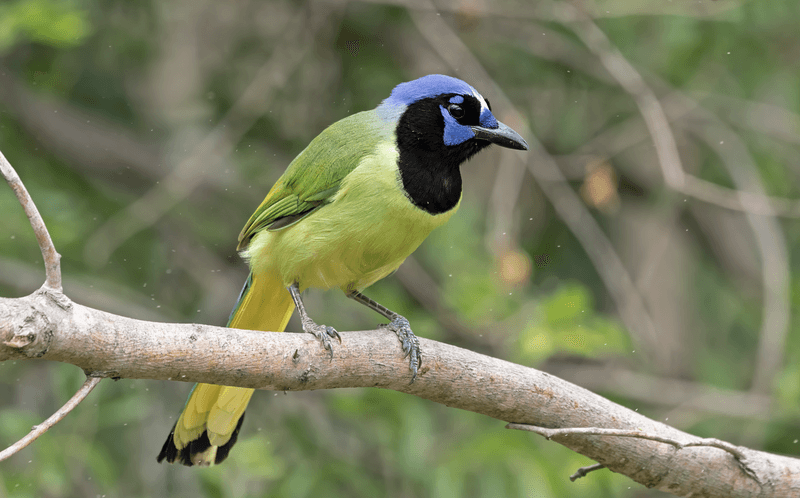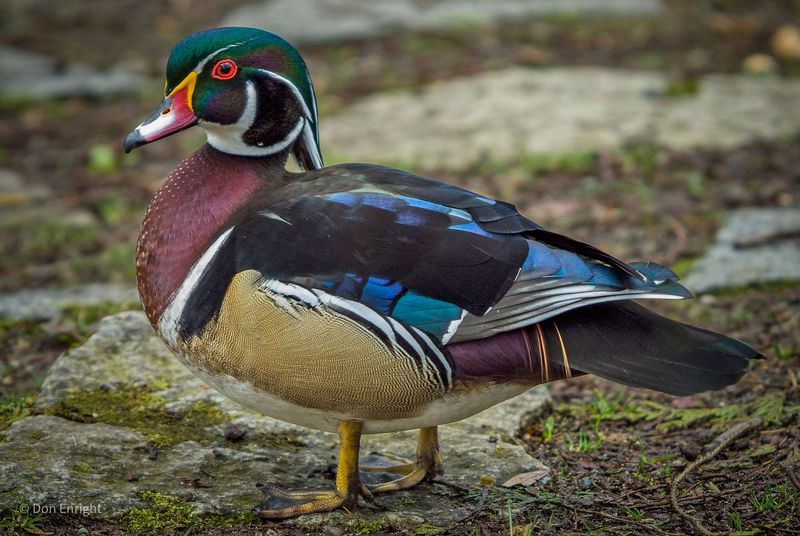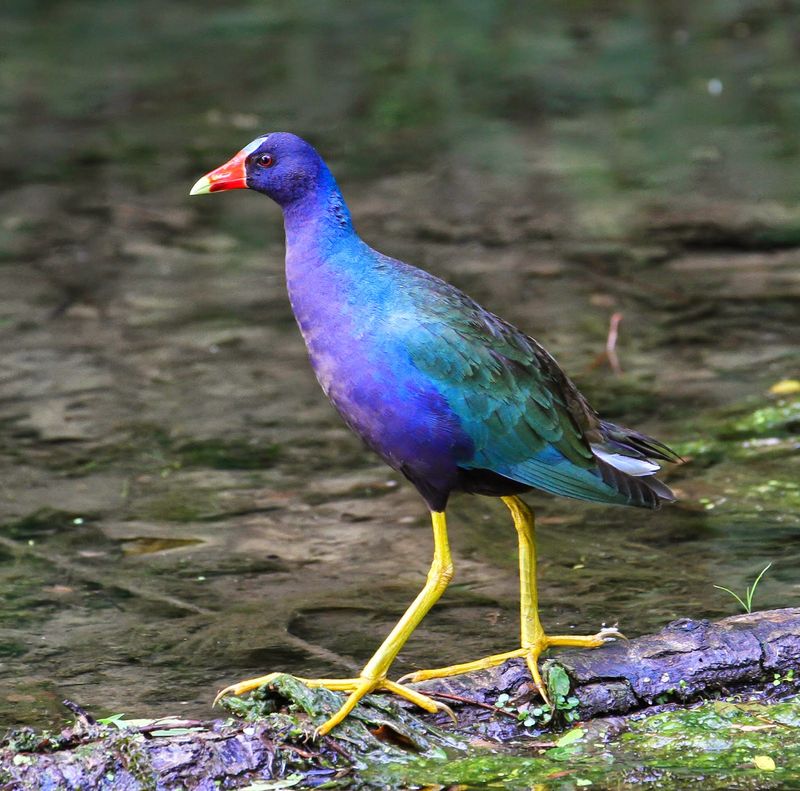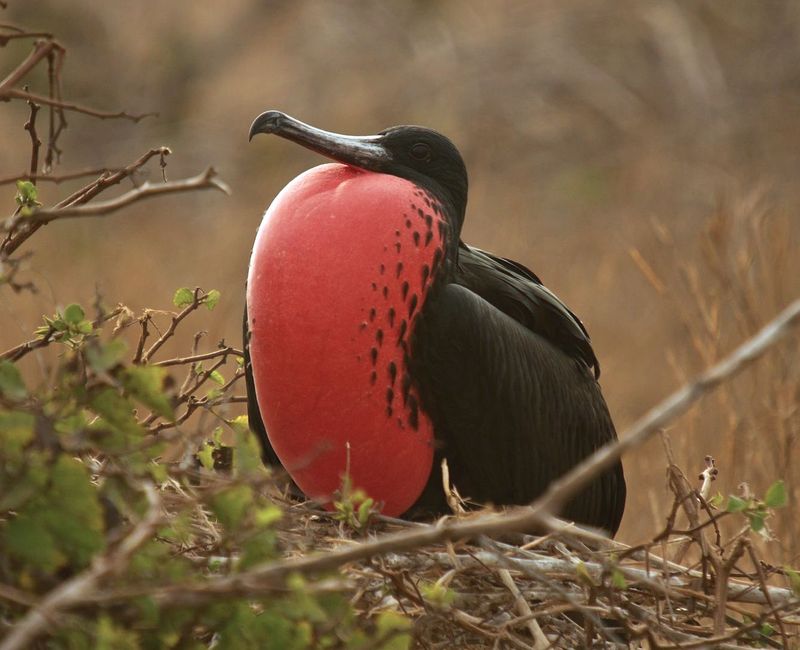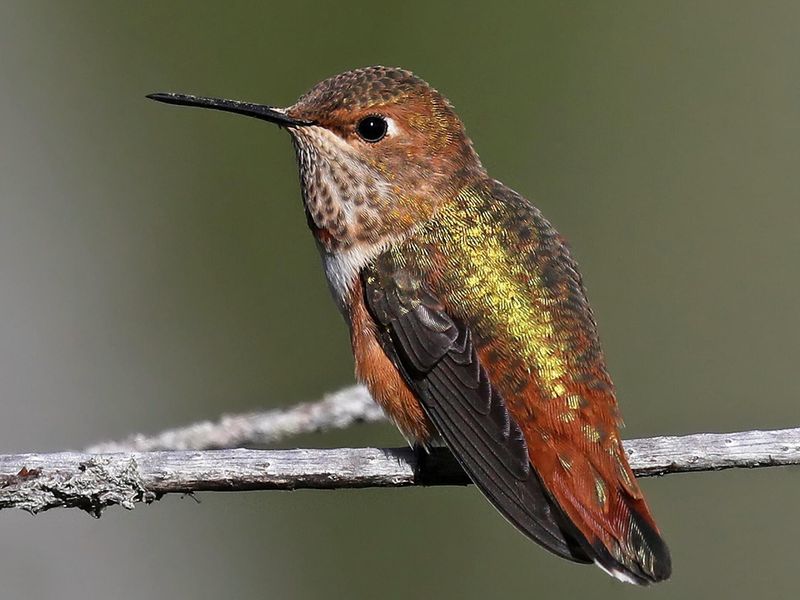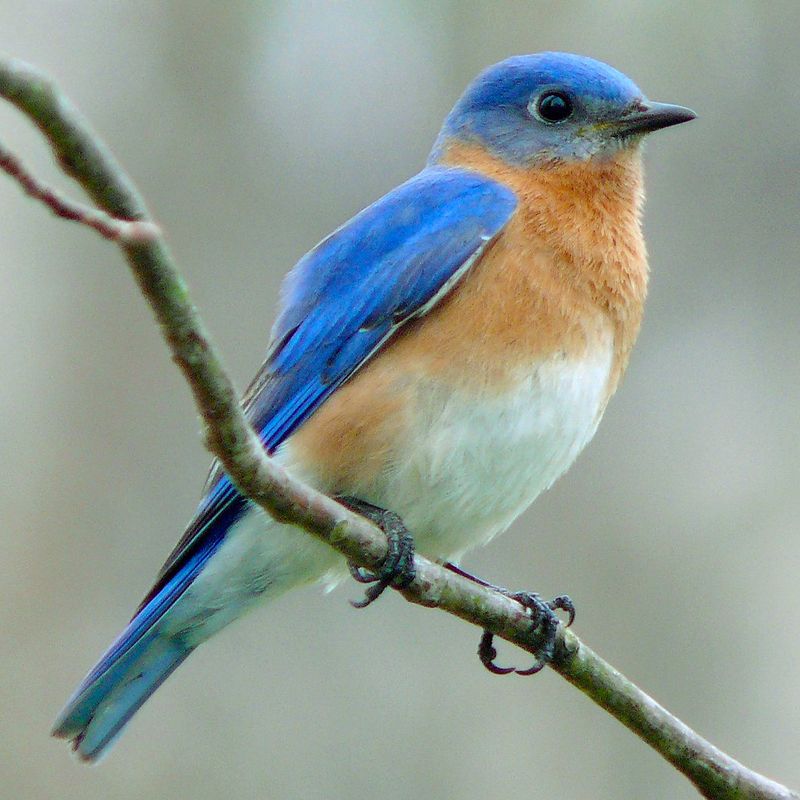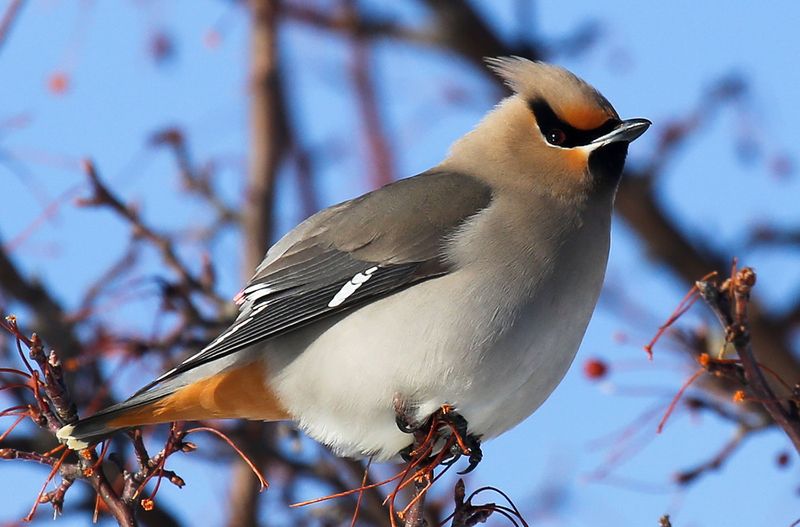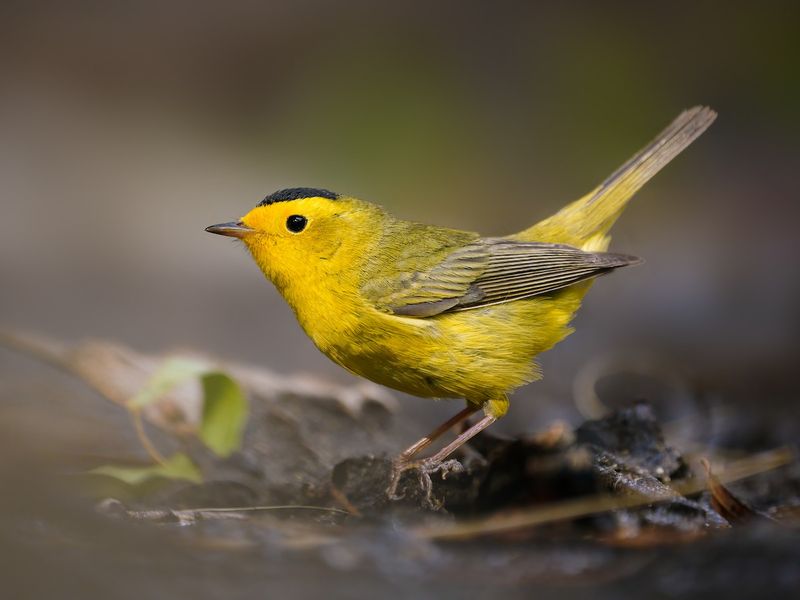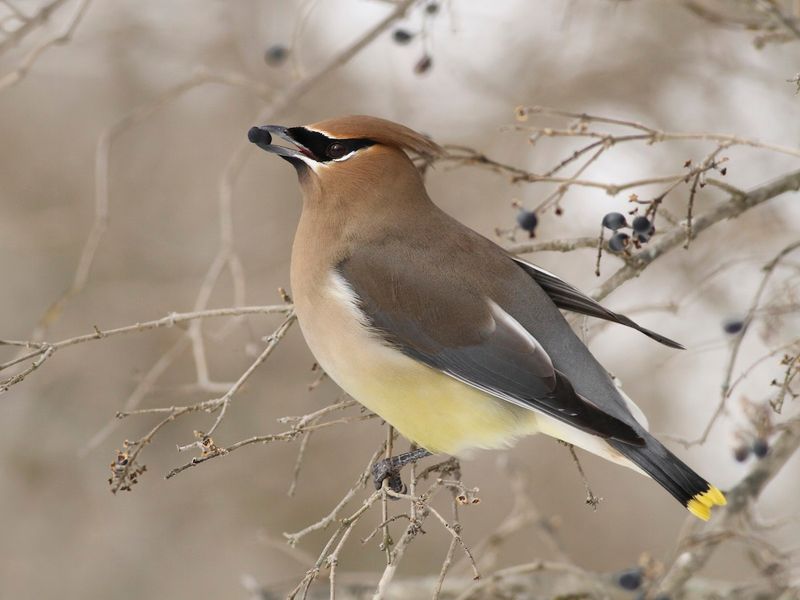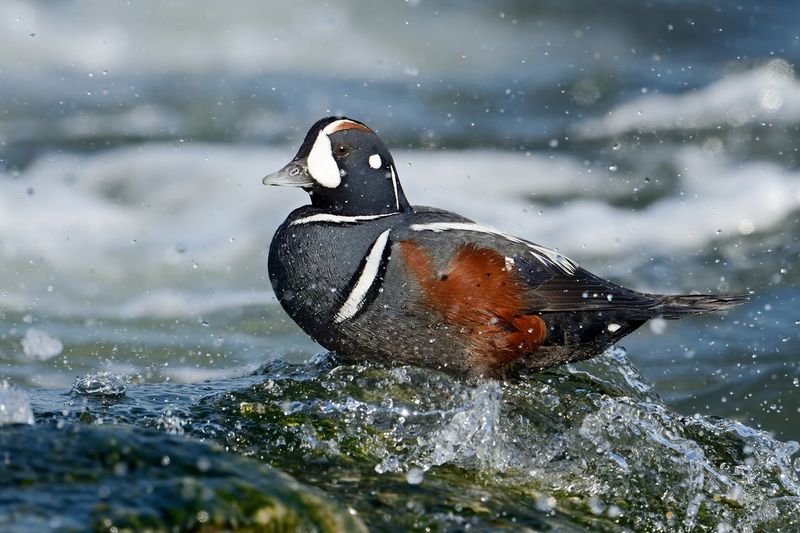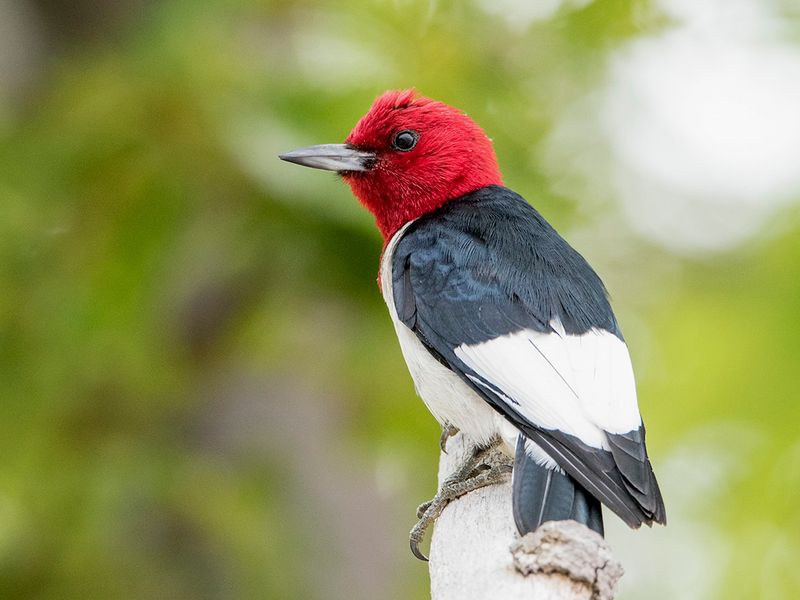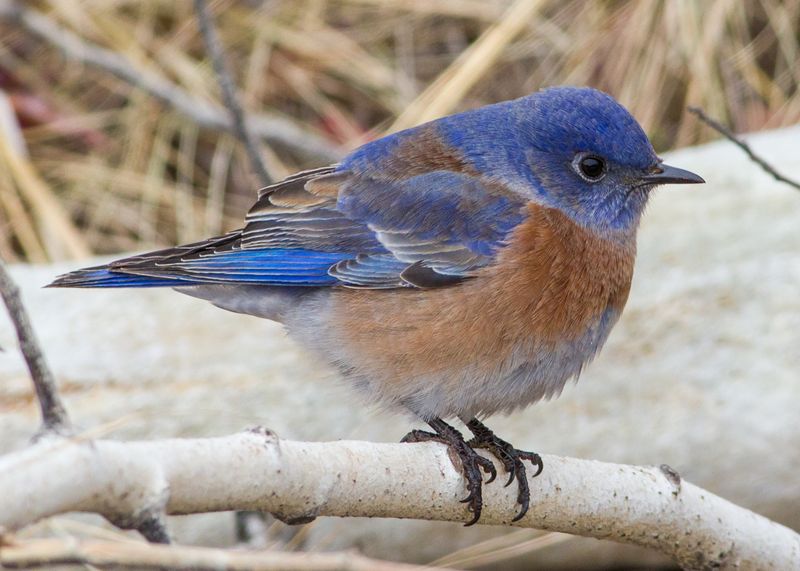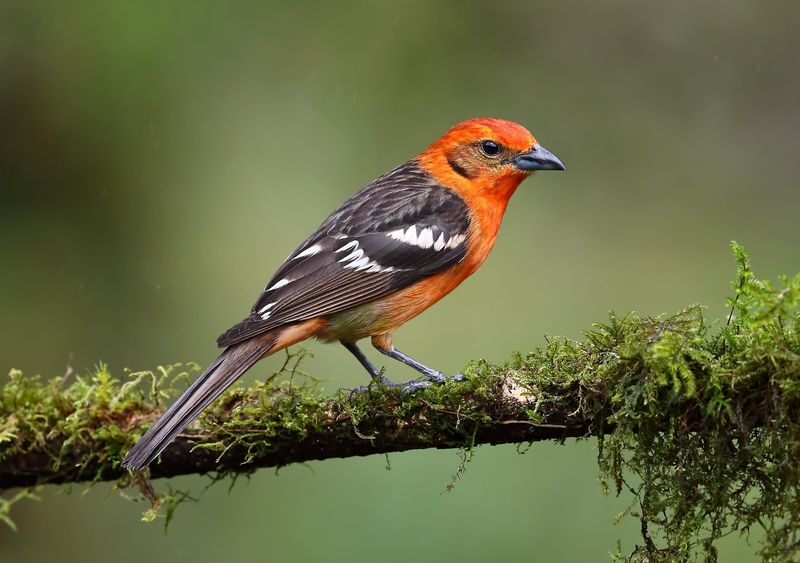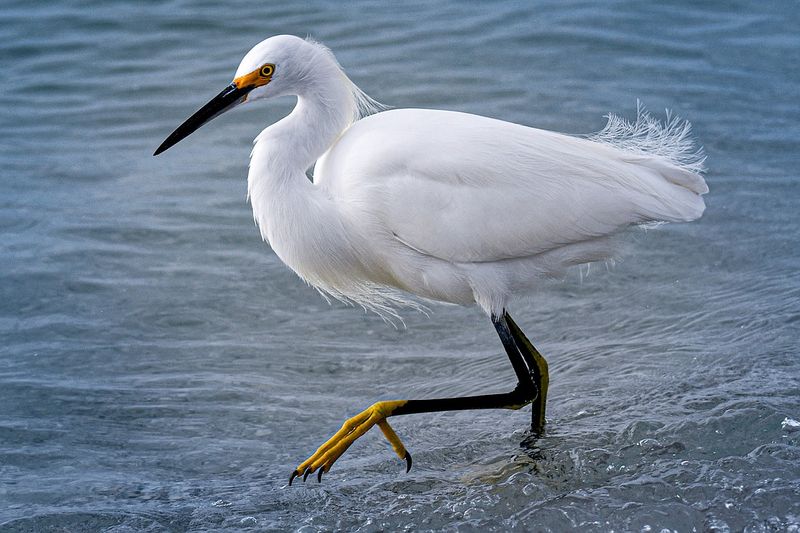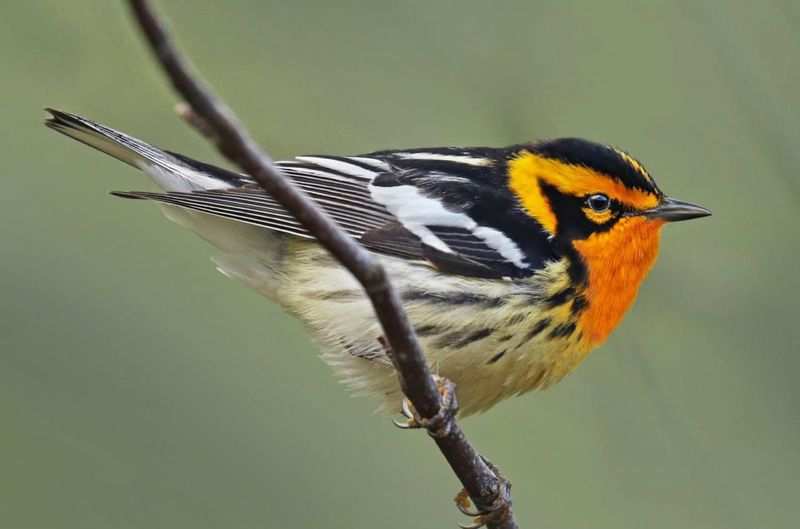America is home to an array of vibrant and delightful birds that captivate birdwatchers and nature enthusiasts.
From the fiery hues of the Northern Cardinal to the brilliant blue of the Indigo Bunting, these avian wonders add splashes of color to forests, fields, and backyards. This guide introduces you to 25 of the most colorful birds you can spot in America.
Each species offers a unique palette and presence, making birdwatching a truly rewarding experience.
1. Northern Cardinal
The Northern Cardinal is a striking red songbird found throughout the eastern United States. Males showcase a vivid red plumage, contrasted by a black mask around their beaks.
Females are equally charming with a more subtle tan color tinged with red accents. Cardinals are year-round residents and favor woodland edges, gardens, and shrublands.
Their melodic songs are a common sound in many backyards, making them a favorite among birdwatchers. Providing sunflower seeds at feeders can attract these birds. Their distinct appearance and cheerful songs make them a delightful presence in any habitat.
2. Painted Bunting
The Painted Bunting is a visual feast, boasting a kaleidoscope of colors that make it a sought-after species for birdwatchers. Males are particularly eye-catching with their mix of blue heads, green backs, and red underparts.
Females, though less vivid, have a pleasant greenish hue. These birds inhabit dense thickets and woodland edges in the southeastern United States. With a preference for seeds, they can be enticed to feeders with millet.
Painted Buntings are shy creatures, often remaining hidden within foliage, adding an element of excitement to their discovery.
3. Scarlet Tanager
The Scarlet Tanager is a summer resident of eastern North American forests. Males are known for their brilliant red bodies and stark black wings and tails, while females exhibit olive-yellow tones.
These birds prefer deciduous forests and are often heard before seen, thanks to their distinctive, burry song. They feed primarily on insects and fruit, making them vital for pest control in their habitats.
Birdwatchers can spot these tanagers during the breeding season when males flaunt their vibrant plumage. Their yearly migration to South America is a testament to their resilience and adaptability.
4. Indigo Bunting
The Indigo Bunting is a small, dazzling bird that graces the fields and woodland edges of eastern North America. Males are famous for their striking electric blue feathers which seem to glow in sunlight, while females are more subdued with brownish hues.
These buntings are migratory, spending winters in Central America. They favor open spaces for singing and display remarkable singing prowess.
Attracting them to your garden requires offering seeds such as nyjer and sunflower. The sight of these birds in full breeding plumage is undeniably captivating and a joy for any observer.
5. Baltimore Oriole
The Baltimore Oriole is a vibrant bird that lights up gardens and orchards with its bright orange and black plumage. Found in the eastern and midwestern United States, these orioles are often heard singing before they are seen.
Orioles prefer open woodlands and are attracted to fruit and nectar, which makes them frequent visitors to feeders offering oranges and sugar water.
Their pendulous nests hang like teardrops from trees, adding to their unique charm. Observing these birds during the spring and summer is a delightful experience for bird enthusiasts.
6. American Goldfinch
The American Goldfinch, often called the wild canary, is a small bird recognized for its striking yellow plumage during the breeding season. Males display this vivid yellow, complemented by black wings and cap, while females are more muted.
These finches are commonly found in weedy fields, gardens, and suburban areas. Their diet consists primarily of seeds, and they are particularly fond of thistle. Providing thistle feeders can attract them to your backyard.
The Goldfinch’s cheerful song and acrobatic flight patterns make them a joyous sight for birdwatchers year-round.
7. Rose-breasted Grosbeak
The Rose-breasted Grosbeak is a medium-sized songbird found in the woodlands of eastern and central North America. Males are easy to identify with their striking black and white plumage and a bold red triangle on their chest, while females are brown and streaked.
These birds frequent forests and gardens, feeding on insects, seeds, and berries. Their rich, melodious song is often compared to that of a robin.
Grosbeaks are a delight for birdwatchers, particularly during migration when they pass through backyards. Offering fruit and sunflower seeds can attract these stunning birds to feeders.
8. Western Tanager
The Western Tanager is a vibrant bird that adds color to the forests of western North America. Males are particularly striking with their bright yellow bodies and fiery red heads, while females sport more subdued yellowish tones.
These birds inhabit coniferous forests and are known for their sweet song. They feed on insects and fruit, often visiting gardens with native plants. Birdwatchers can spot them during migration when they are most active.
The Western Tanager’s vivid colors and melodious calls make it a favorite among those who enjoy observing avian beauty.
9. Blue Jay
The Blue Jay is a well-known bird across the eastern and central United States, celebrated for its intelligence and striking blue, white, and black plumage. These birds are known for their complex social behavior and loud calls.
Blue Jays are often seen in forests, parks, and suburban areas, where they feed on nuts, seeds, and insects. They are known to mimic the calls of hawks, adding intrigue to their presence.
Providing peanuts and sunflower seeds can attract them to feeders. Their bold colors and curious nature make them a fascinating subject for birdwatchers.
10. Vermilion Flycatcher
The Vermilion Flycatcher is a small, brilliantly colored bird found in the southwestern United States. Males are known for their striking vermilion red bodies, contrasting with dark brown wings and tails.
These flycatchers thrive in open habitats such as deserts and grasslands, where they perch in visible spots to hunt insects. They are often seen flitting from perches to catch their prey mid-air.
The vibrant colors of the Vermilion Flycatcher make it a dazzling sight in its arid environment, and a treat for anyone lucky enough to observe its acrobatic flights.
11. Green Jay
The Green Jay is a colorful bird inhabiting the subtropical forests of southern Texas. This striking bird is adorned with a mix of green, blue, and yellow feathers, making it a visual treat for bird enthusiasts.
Green Jays are social birds, often seen in pairs or family groups. They are known for their intelligence and adaptability, feeding on fruit, insects, and small vertebrates.
Providing fruit at feeders can attract these jays to your backyard. Their lively colors and playful behavior make them a fascinating addition to the American avian landscape.
12. Wood Duck
The Wood Duck is a stunningly beautiful waterfowl found in wooded swamps, marshes, and streams across North America. Males are particularly eye-catching with their iridescent green, purple, and chestnut plumage.
These ducks are known for their unique nesting habits, often choosing tree cavities near water bodies. They feed on aquatic plants, seeds, and insects. Providing nest boxes can attract these ducks to your area.
The Wood Duck’s striking appearance and distinctive call make it a favorite among birdwatchers, adding a touch of elegance to the waterways it inhabits.
13. Purple Gallinule
The Purple Gallinule is a vibrant bird found in the wetlands of the southeastern United States. Known for its stunning purple-blue plumage and bright yellow legs, this bird stands out in its marshy habitat.
Gallinules are adept swimmers and walkers, often seen foraging among aquatic vegetation. They feed on seeds, fruits, and small animals. Birdwatchers can spot them in national wildlife refuges and wetland areas.
The colorful appearance and graceful movements of the Purple Gallinule make it a captivating sight for nature lovers exploring America’s wetlands.
14. Magnificent Frigatebird
The Magnificent Frigatebird is a remarkable seabird found along the coasts of the southeastern United States. Males are known for their large wingspan and striking red throat pouch used in courtship displays.
These birds are masters of the air, often seen soaring effortlessly above the ocean. They feed primarily on fish and squid, often snatching prey from the water’s surface.
Frigatebirds are a spectacle to observe, especially during breeding season when males inflate their throat pouches. Their aerial agility and distinctive appearance make them a standout species for oceanic birdwatchers.
15. Rufous Hummingbird
The Rufous Hummingbird is a small yet fiery bird known for its brilliant orange plumage. Found in the western United States, this hummingbird is a marvel of speed and agility.
Rufous Hummingbirds are migratory, traveling long distances between their breeding and wintering grounds. They favor gardens and wildflower areas with a rich supply of nectar. Providing feeders with sugar water can attract these birds to your yard.
Their dazzling colors and rapid wingbeats make them a favorite among birdwatchers, offering a glimpse into the vibrant world of hummingbirds.
16. Eastern Bluebird
The Eastern Bluebird is a charming songbird found in open fields and orchards across eastern North America. Males are instantly recognizable by their bright blue backs and warm orange bellies, while females are more subdued.
These birds prefer habitats with scattered trees and open spaces. They feed on insects and fruits, often seen swooping down from perches to catch prey. Installing nest boxes can encourage bluebirds to breed in your area.
The harmonious song and gentle presence of the Eastern Bluebird bring a touch of joy to the landscapes they inhabit.
17. Bohemian Waxwing
The Bohemian Waxwing is a sleek, sociable bird known for its silky gray plumage and distinctive red, yellow, and white markings. Found in the northern forests and occasionally venturing south during winter, these birds travel in flocks.
Waxwings feed primarily on fruit and berries, making them a vital part of their ecosystem. They are often spotted in berry-laden trees, adding color to snowy landscapes.
Birdwatchers can look for these birds in parks and natural reserves. The Bohemian Waxwing’s elegant appearance and social behavior make it a captivating sight in the winter months.
18. Wilson’s Warbler
Wilson’s Warbler is a delightful small bird, instantly recognizable by its bright yellow body and distinctive black cap. Found across North America during migration, these warblers inhabit shrubby areas and forest edges.
They are insectivorous, flitting through foliage in search of prey. Their lively movements and cheerful song make them a favorite among birdwatchers in spring and fall. Providing native plants in gardens can support their migratory stopovers.
The vibrant colors and energetic nature of Wilson’s Warbler bring a touch of sunshine to the habitats they visit during their travels.
19. Cedar Waxwing
The Cedar Waxwing is a handsome bird known for its sleek brown and yellow plumage and distinctive red wax-like wing tips. These social birds are often found in flocks, frequenting berry-laden trees across North America.
Waxwings are frugivorous, with a diet primarily consisting of fruit, making them important seed dispersers. Observing their graceful movements and synchronized flight is a treat for bird enthusiasts.
Providing berry-producing shrubs can attract these birds to your garden. The Cedar Waxwing’s elegant appearance and communal behavior make it a beloved sight in any season.
20. Harlequin Duck
The Harlequin Duck is a strikingly patterned bird found in coastal and mountain stream habitats in North America. Males are particularly eye-catching with their blue, chestnut, and white plumage.
These ducks prefer fast-flowing streams and rocky coastlines, where they feed on aquatic invertebrates. Observing them requires patience and a keen eye, as they blend with their surroundings.
Birdwatchers often find these ducks in national parks and coastal areas. The Harlequin Duck’s distinctive appearance and unique habitat preferences make it a fascinating species for dedicated birdwatchers.
21. Red-headed Woodpecker
The Red-headed Woodpecker is a striking bird known for its bold crimson head and contrasting black-and-white body. Found across the eastern United States, these birds inhabit open woodlands and savannas.
Woodpeckers feed on insects, nuts, and fruit, often storing food in tree cavities. They are known for their loud calls and drumming behavior.
Providing suet and peanuts can attract them to your backyard. The Red-headed Woodpecker’s vivid colors and dynamic foraging techniques make it a captivating presence in its natural habitat.
22. Western Bluebird
The Western Bluebird is a vibrant songbird found in open woodlands and grasslands across western North America. Males boast bright blue and rusty orange plumage, while females are more muted in color.
These birds prefer habitats with scattered trees and open spaces, feeding on insects and fruits. Installing nest boxes can encourage them to breed in your area.
The cheerful song and vivid appearance of the Western Bluebird make it a delightful sight for bird enthusiasts, adding a splash of color to the landscapes they inhabit.
23. Flame-colored Tanager
The Flame-colored Tanager is a tropical bird occasionally found in the woodlands of the southwestern United States. Males are stunning with their fiery orange and black plumage, while females display a more subdued yellow-green.
These tanagers inhabit montane forests and are often seen foraging for insects and fruit. Birdwatchers in Arizona may spot them during the breeding season.
The vivid colors and melodic songs of the Flame-colored Tanager make it a sought-after species for those exploring the diverse avian life of the American Southwest.
24. Snowy Egret
The Snowy Egret is an elegant wading bird found in wetlands and coastal areas across the United States. Known for its striking white plumage and bright yellow feet, this egret is a picture of grace and beauty.
Egrets feed on fish and aquatic insects, often seen stalking prey in shallow waters. Their elaborate courtship displays are a highlight of the breeding season. Observing these birds requires patience as they move with poise.
The Snowy Egret’s stunning appearance and graceful movements make it a cherished sight for birdwatchers exploring America’s waterways.
25. Blackburnian Warbler
The Blackburnian Warbler is a vibrant songbird known for its fiery orange throat and contrasting black-and-white striped plumage. Found in the forests of eastern North America, these warblers are a visual delight.
They prefer mature forests, feeding on insects and caterpillars. Birdwatchers can spot them during migration when they are most active and visible. Providing native trees and shrubs can support their habitat needs.
The Blackburnian Warbler’s striking colors and melodious song make it a favorite among those who appreciate the beauty of springtime birding.
